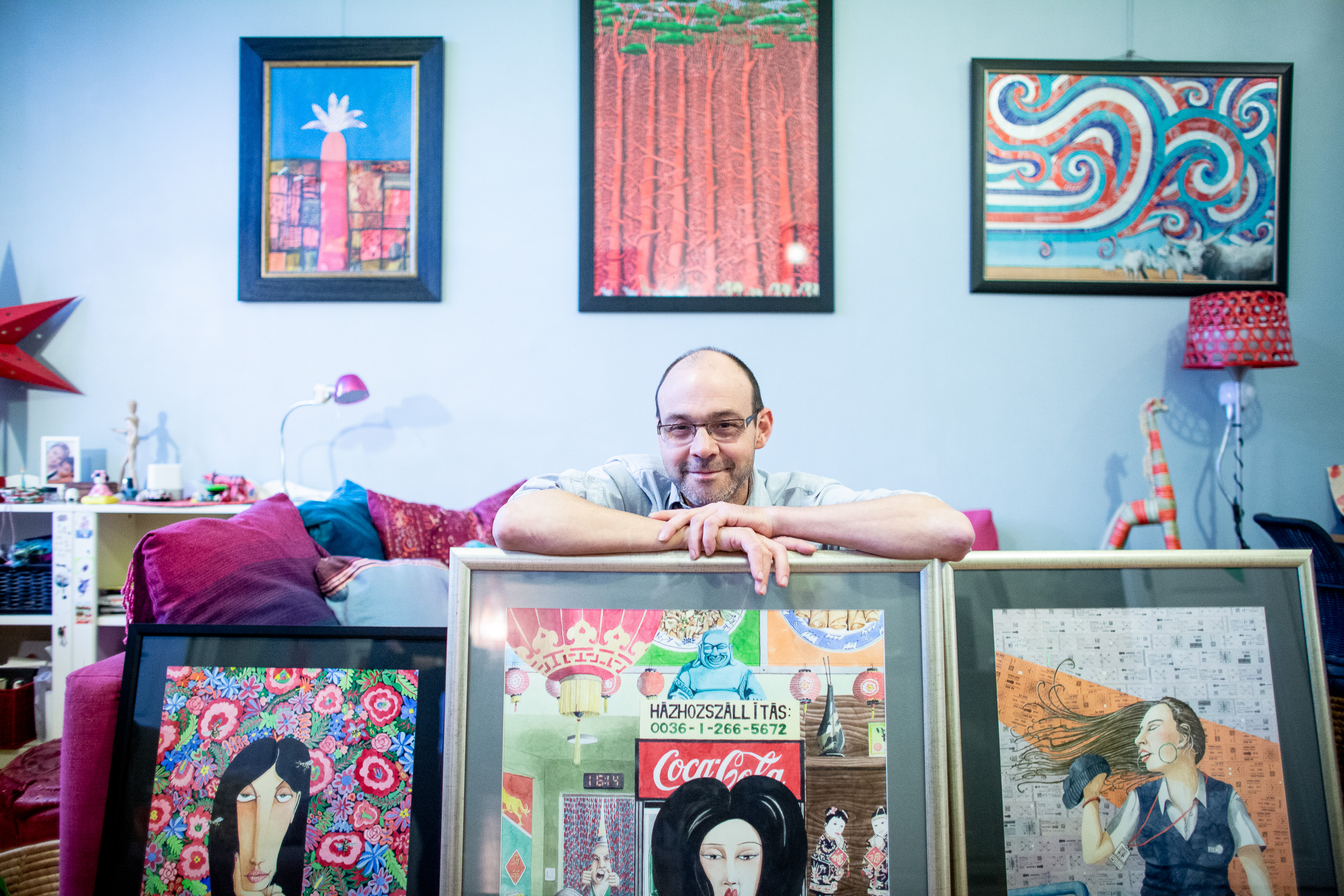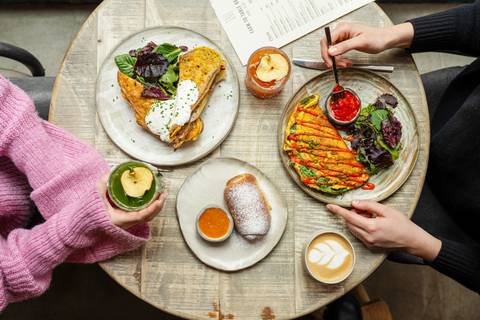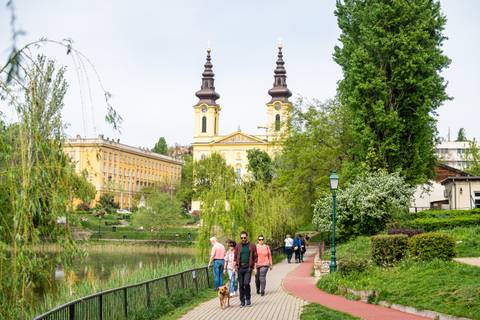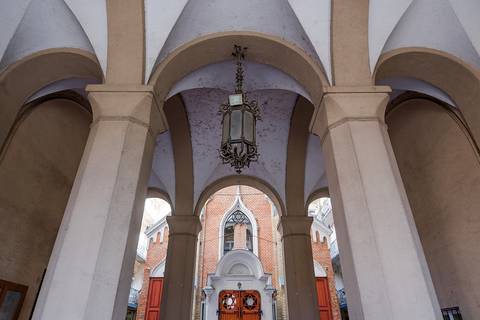Budapest has a unique beauty that constantly inspires artists. Photographers, painters and designers depict this stunning city in masterful works – and then there’s Marcus Goldson, who captures its unique essence so perfectly, all the nuances that really make Budapest Budapest. Grumpy faces on the morning bus, a cashier bored to tears, tourists drunk as skunks in the party district and all those faces, places and scenes you know so well if you spend any time in this town. Meet the humble and hugely talented Marcus Goldson.
We are circling up the huge spiral staircase of a monumental Budapest building to take a sneak peak into the life of an artist who depicts this city in all its everyday glory. This lovely and warm family home would seem rather ordinary if it wasn’t for the many astonishing artworks adorning the walls, drawings and sketches scattered around, a half-finished painting taking up much of the dinner table and in the midst of it all, Marcus Goldson. As a foreigner, Marcus sees Hungarian reality for what it is, playing up the grotesque features and characters of Budapest to comic effect – while painting a pretty accurate picture of society.
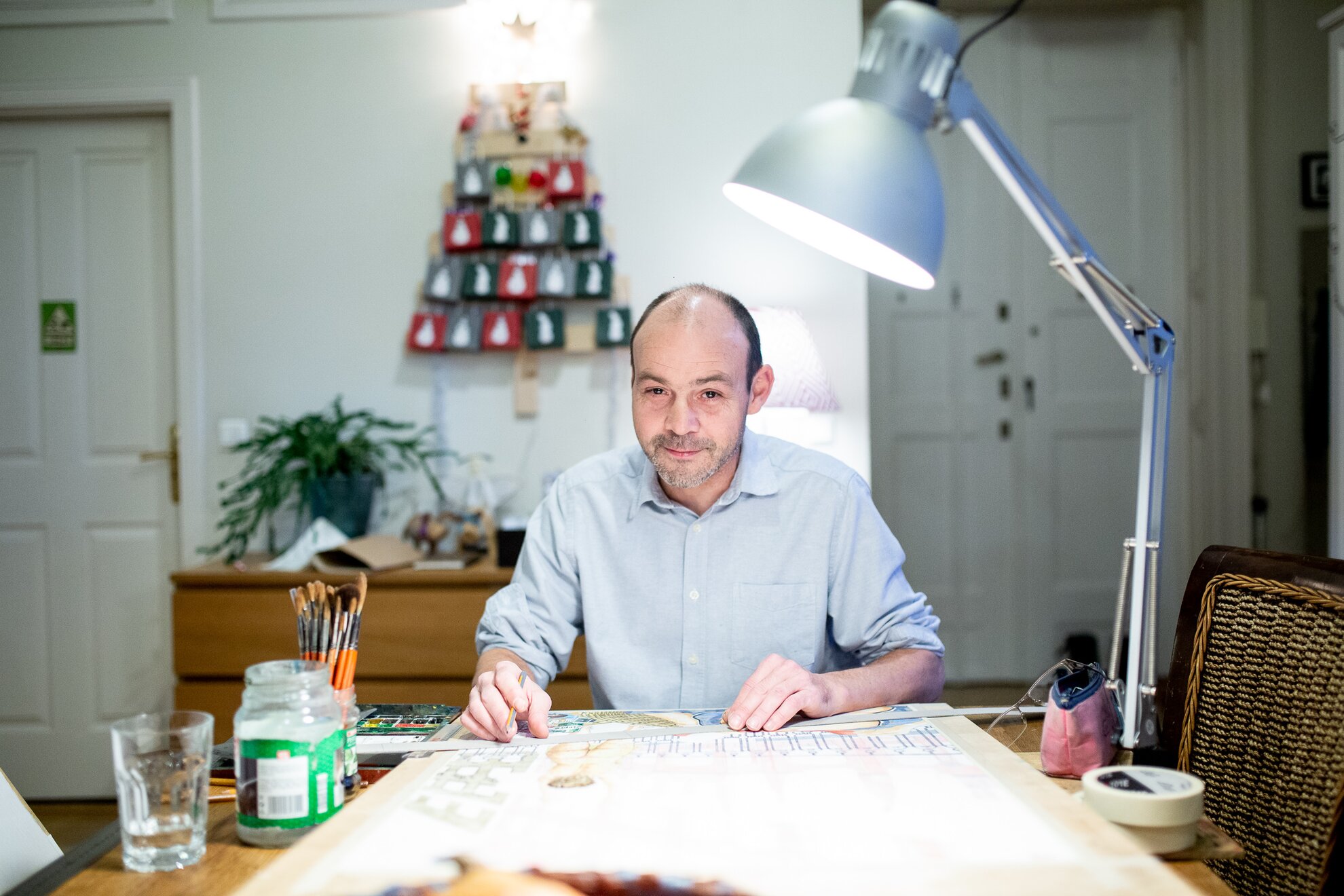
Marcus was born to British parents in Kenya, where he was raised until about the age of 13. “It was great fun growing up there. You can always wear shorts, flip-flops and there’s great weather, which is all you need. I had lots of friends from different cultures and quite a bit of freedom, more than what I later saw in Europe.”
After his parents were divorced, Marcus went to live in the UK. “Moving from Kenya to the UK was quite a bit of a shock as a kid.” He stayed in the UK for university, studying sculpture. “The UK is a beautiful place, with beautiful countryside and people, but – I’m cherry picking now – there is also the drinking culture and it can get a lot rougher than what I’ve ever experienced in Kenya or here”.
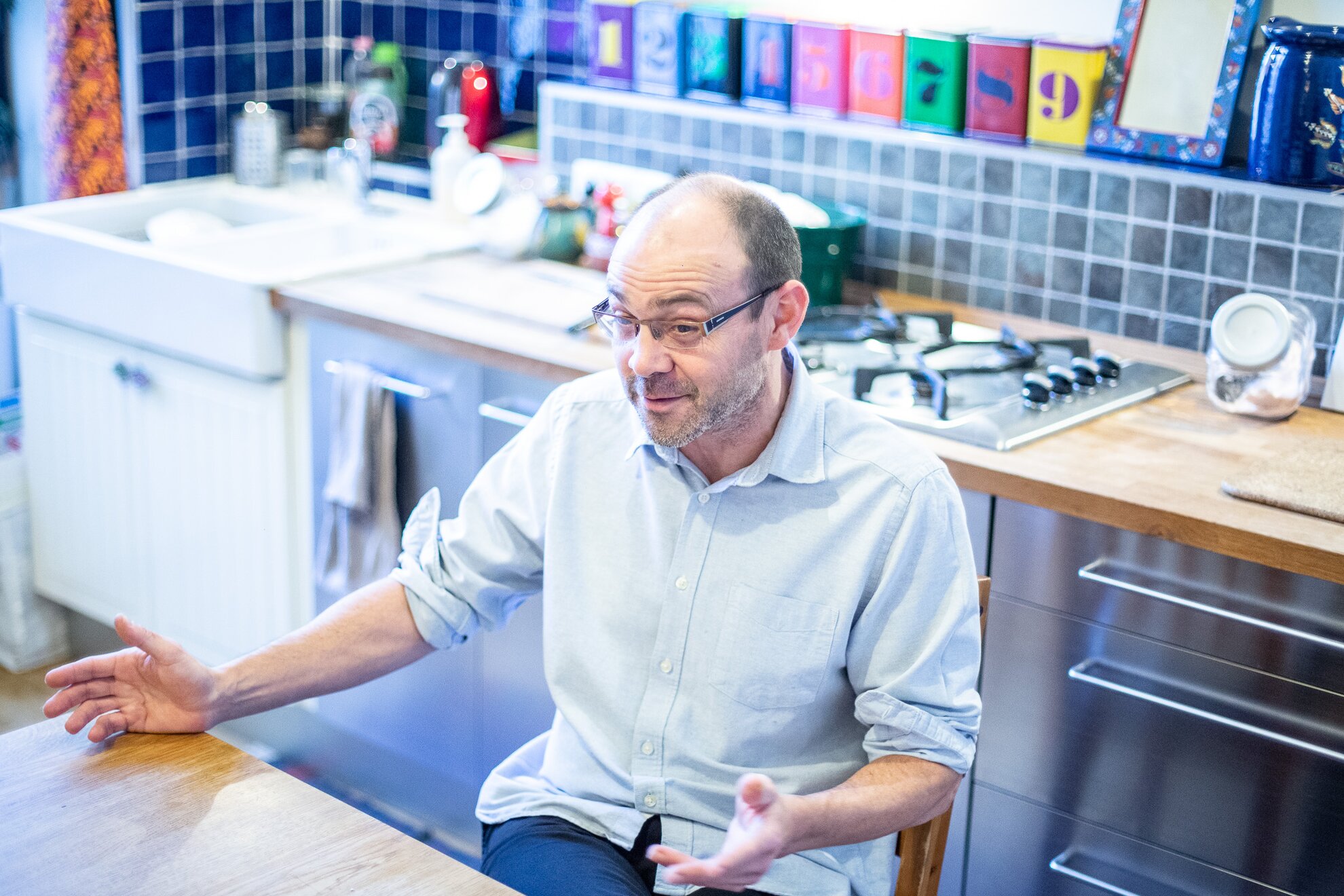
Later, love swept Marcus to Budapest, when working at a London bar he met his future wife, Ildikó, whom he followed all the way to her home country. “I actually preferred coming to Budapest than the UK, it feels really safe, it always has done. I love living here and will definitely stay.”
Speaking about Budapest after 25 long years, Marcus has become a bit of a patriot. “ I do feel like a local now, I feel a covetousness about Budapest and I defend it like a grumpy old man. Damn those tourists!” – he laughs – “I’m joking, tourism is good and it’s important, but sometimes it can be a bit too much. The city centre feels a lot more touristy now than it did before. I miss those little local shops and butchers a bit, they used to be everywhere. I talk to people in shops and when they start speaking to me in English I’m like: I took 25 years to learn the language, speak to me in Hungarian!” – he giggles.“I understand more than I speak, but any chance I get I practise.”
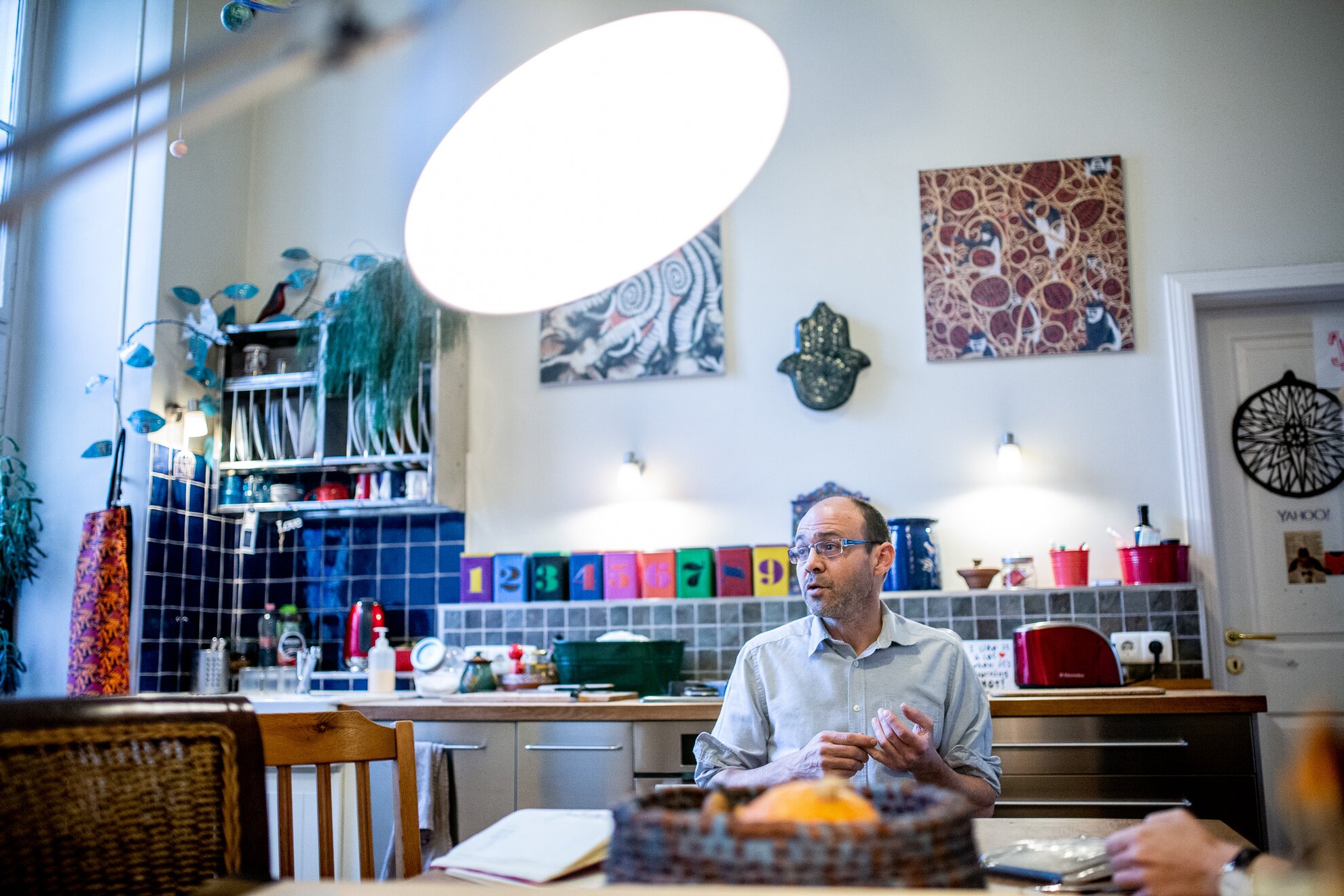
As a foreigner just coming to a country recovering from its recently concluded Communist era, Marcus could see Hungarian reality, perhaps more of its bitter side, from an outsider's point of view. He started drawing city scenes and people, leading to a visual diary, as he calls it. “My drawings are all real scenes and situations I’ve been in, I’m not really using my imagination, these are all real people I’ve seen. When I arrived in Budapest I was like, wow, this is great! All the guys had moustaches, the food was different, big water culture, pools everywhere, the river, the little things people did and the traditions they had, smoking, the Hungarian version of breathing, I loved it all. I thought this was an exotic place.”
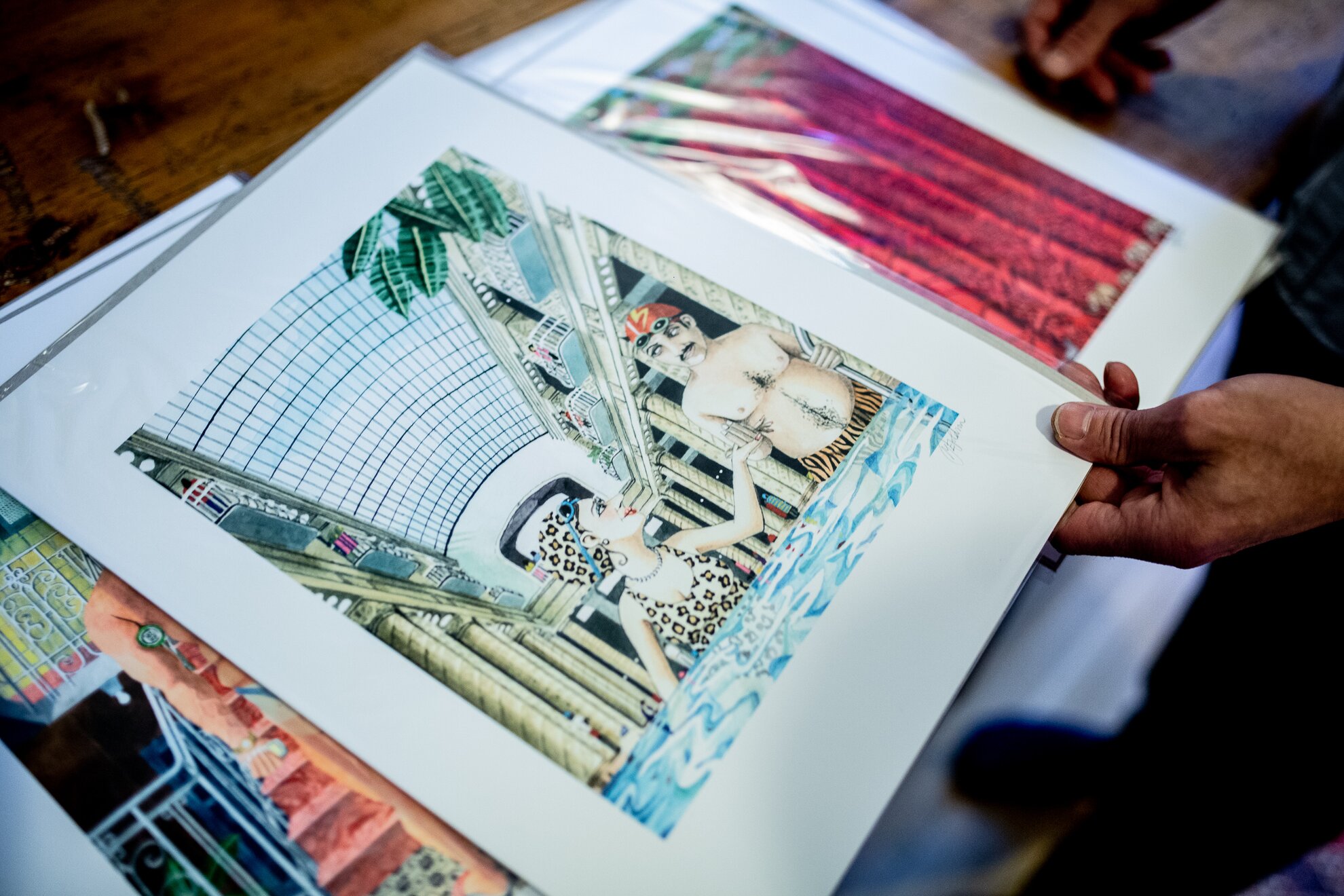
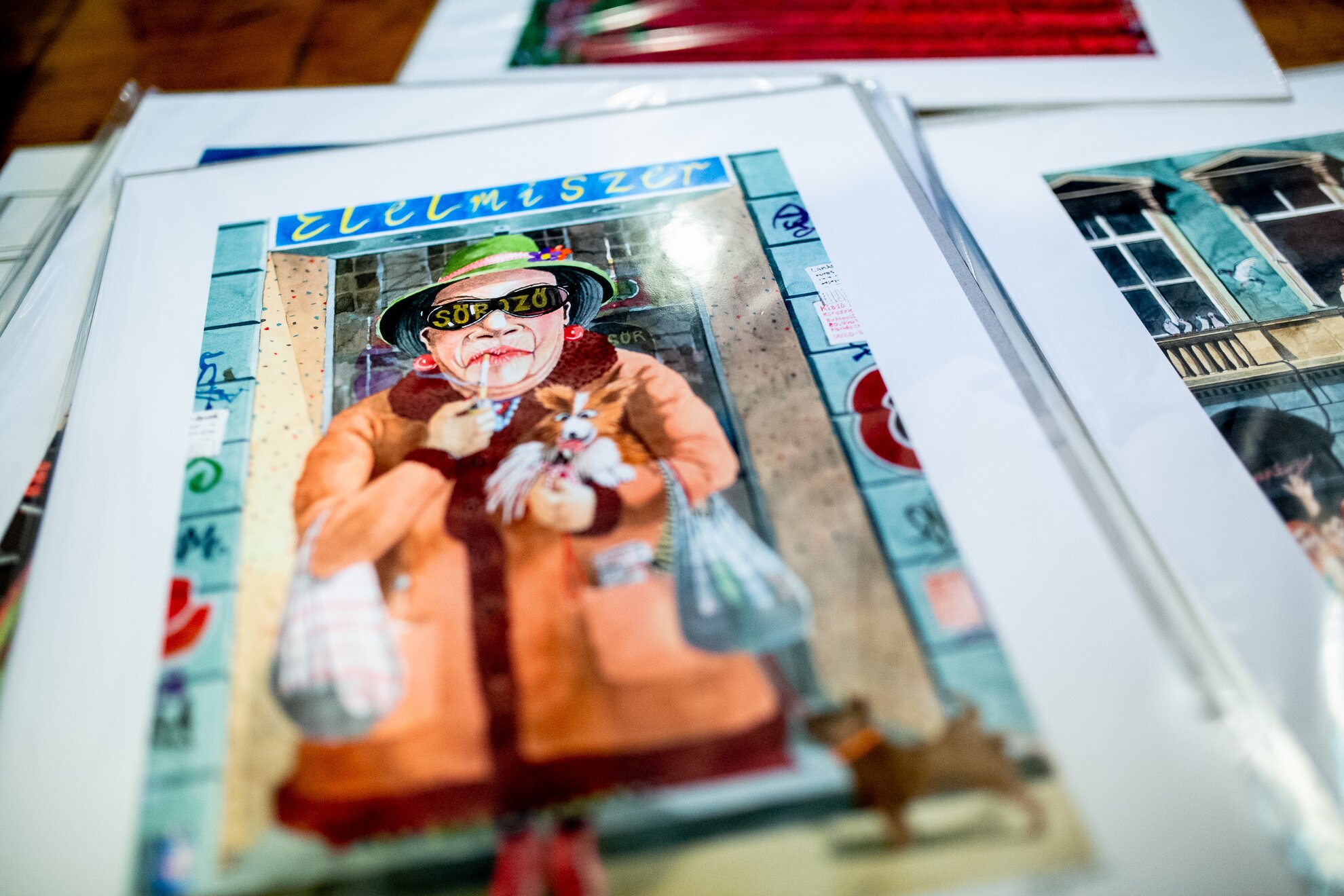
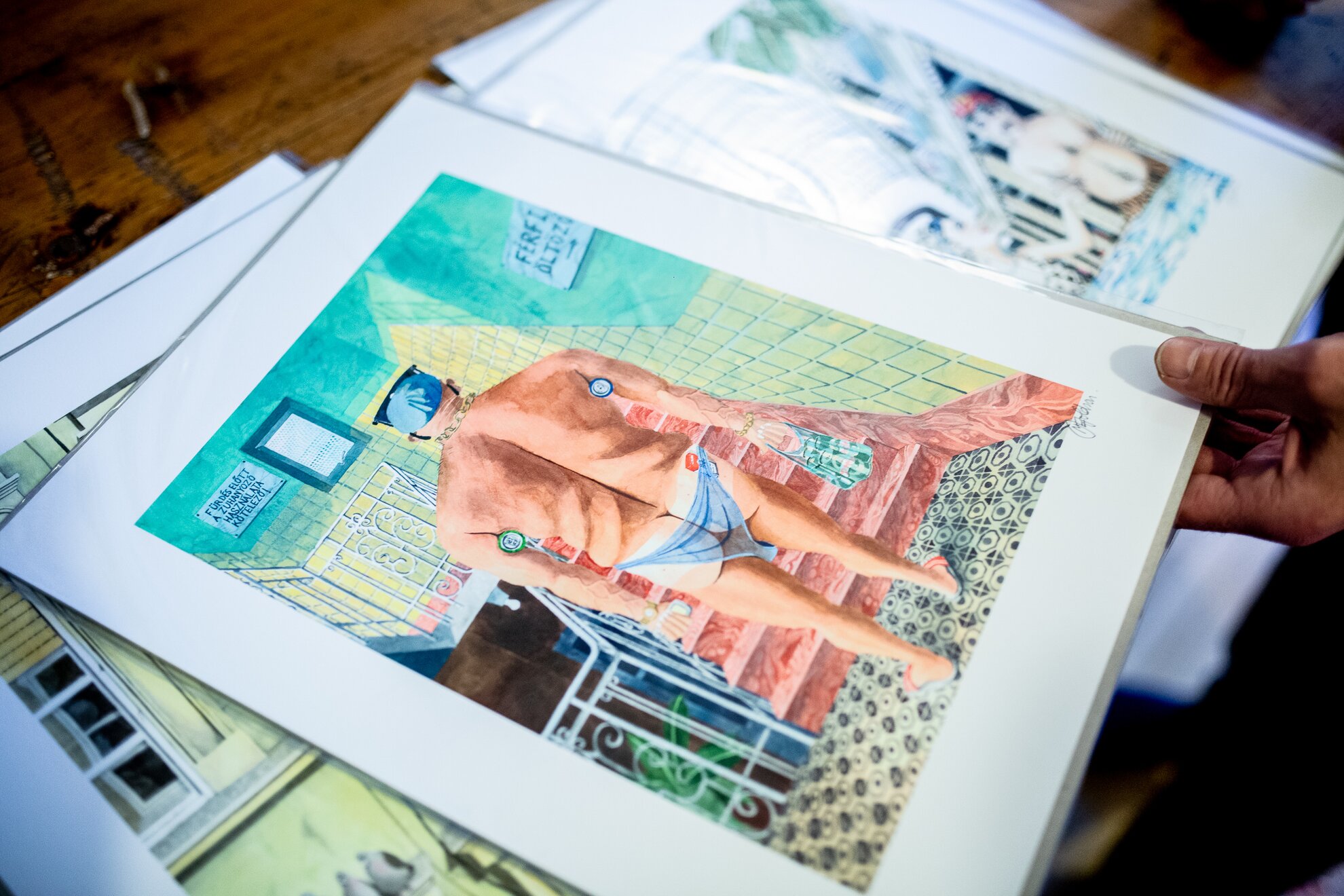
“I went to a lot of places all the time, like the Széchenyi Baths and saw these guys and I thought, what kind of swimming costume is that?! (See the picture above – Ed.) They were smoking cigarettes and drinking, then they would play a bit of chess. At other places, people had those little bottles of spirits for breakfast. I focused on these people and places, as painting them in a certain scene lets you imagine what kind of people they are and what they are going to do in the next hour or that day. Gives you a bit of an insight. I’m kind of documenting as when I look back at some of my paintings, I know exactly where I was and what I was thinking at the time. I add the tiny details like a Hungarian beer or a cigarette as without them it could be anywhere in Europe. It is for me to remember.”
Marcus has a few little black books – presents from his wife – scattered around on the table, filled with quick sketches, all amazing. As we go through them it really is all there, what Marcus has seen and where he's been – as he described it, a diary. And he presents everything in a way that makes you feel like you were there, too. “ I fill hundreds of these books with whatever, really. Characters I’ve seen and even very teenage thoughts” – he laughs.“I bike everywhere and draw people. There’s something about painting almost ugly, boring situations as well and make them a bit more interesting. I draw everything in here.”
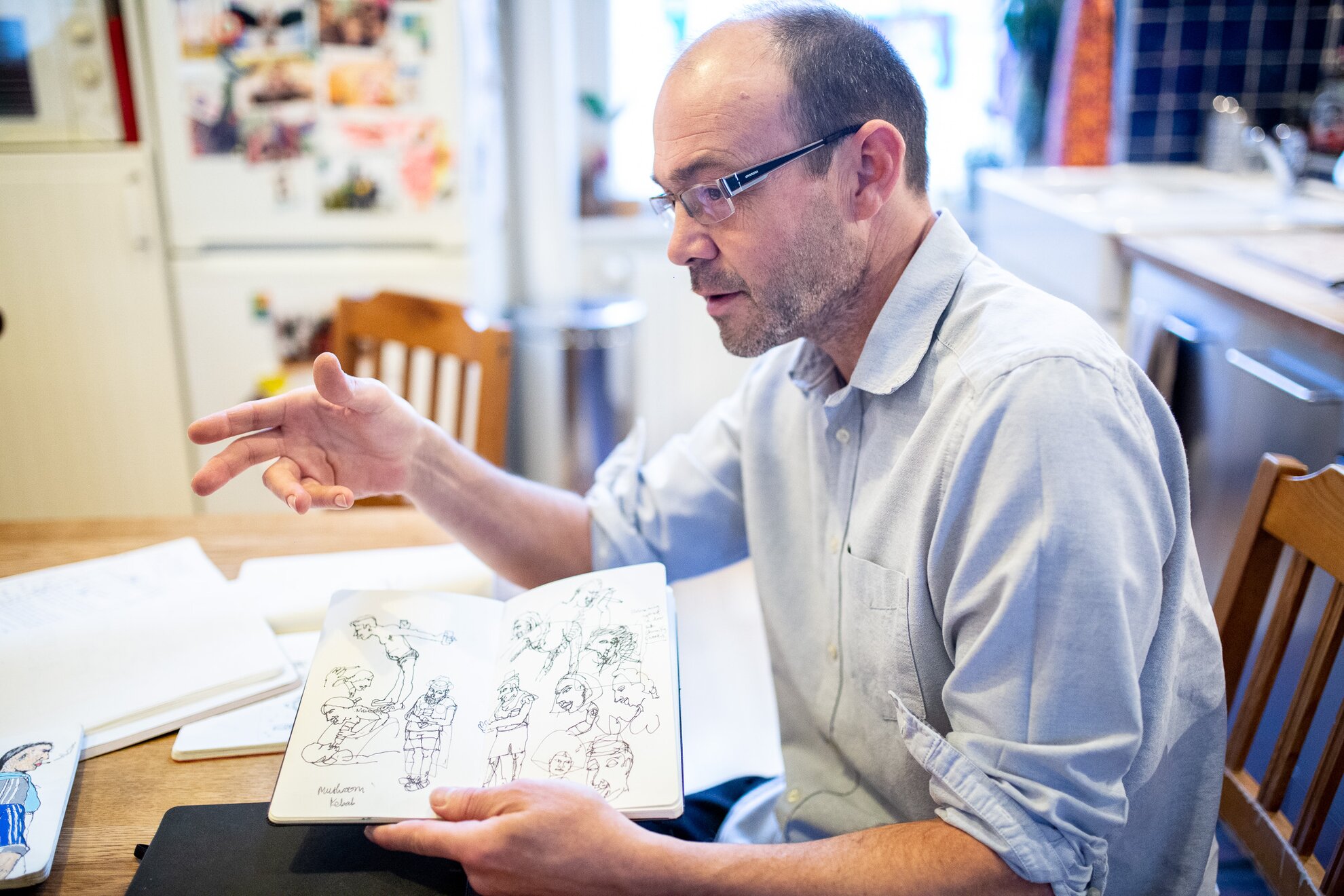
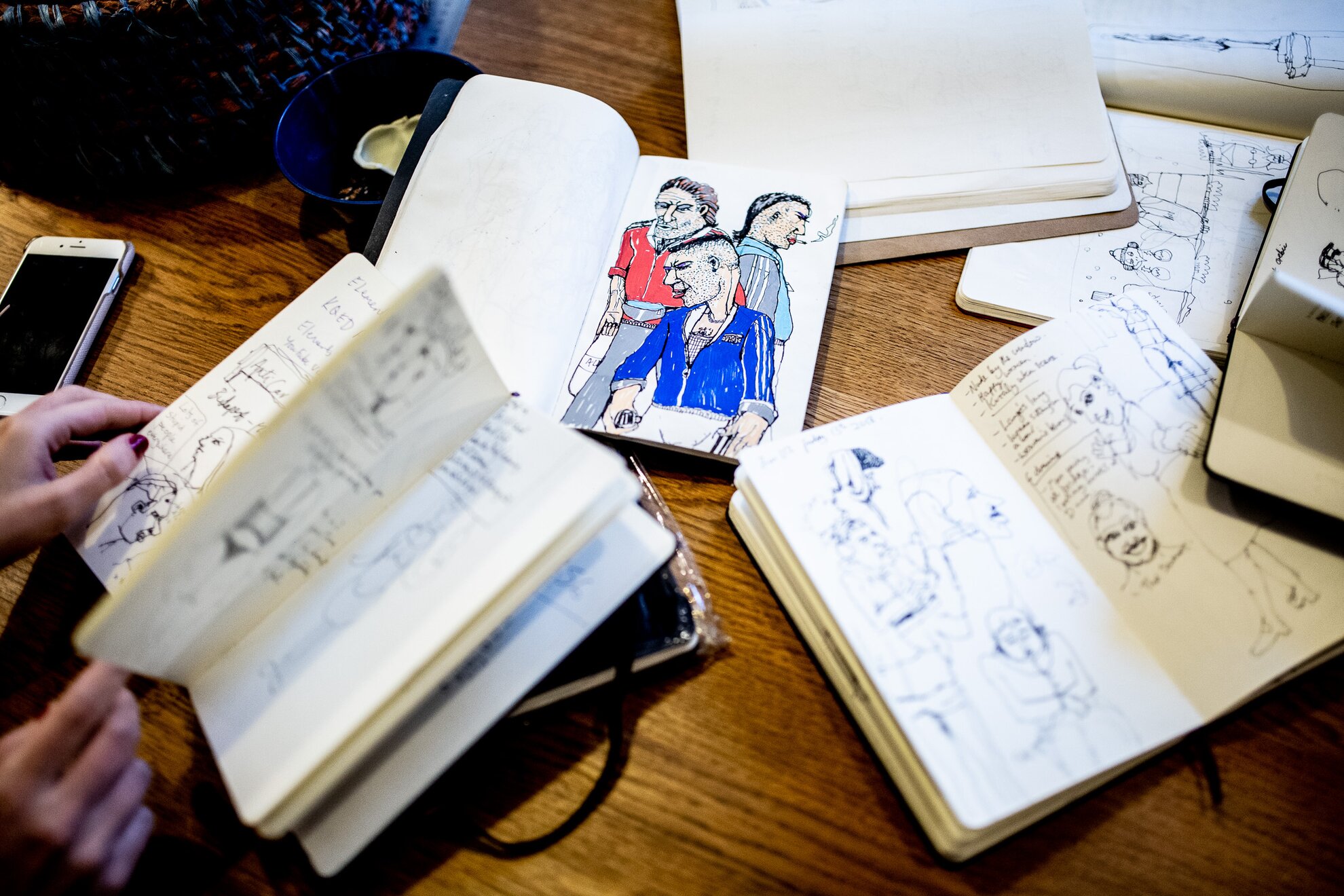
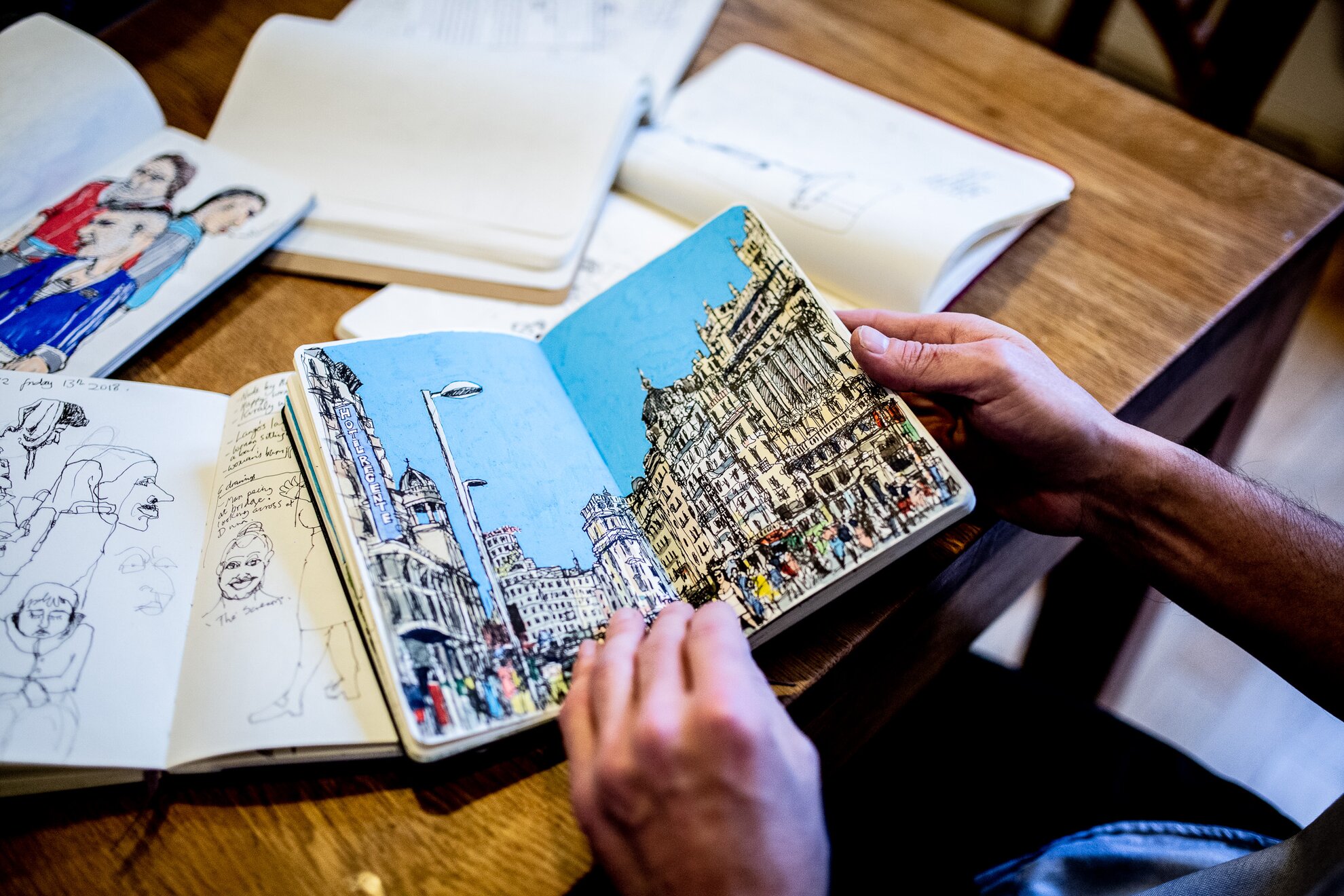
“In the past six or seven years there have been a lot of changes. Budapest is now more cosmopolitan, more international. Sometimes people say that Hungarians are rude, but I definitely don’t think that. They are rather straight. If you ask someone in England how they’re doing, they’ll just say ‘fine, thanks!' – always. If you ask a Hungarian… you get the raw reality. They tell you as it is and I do like that.”
A masterfully witty painting is 'Liquidification', the modern-day depiction of Giotto’s 'Lamentation' in downtown Budapest. “I saw a group of tourists totally wasted with one already on the floor and another trying to make him drink vodka. It made me think of Giotto’s painting as it was the exact same pose but in the party district in Budapest” – he smiles.
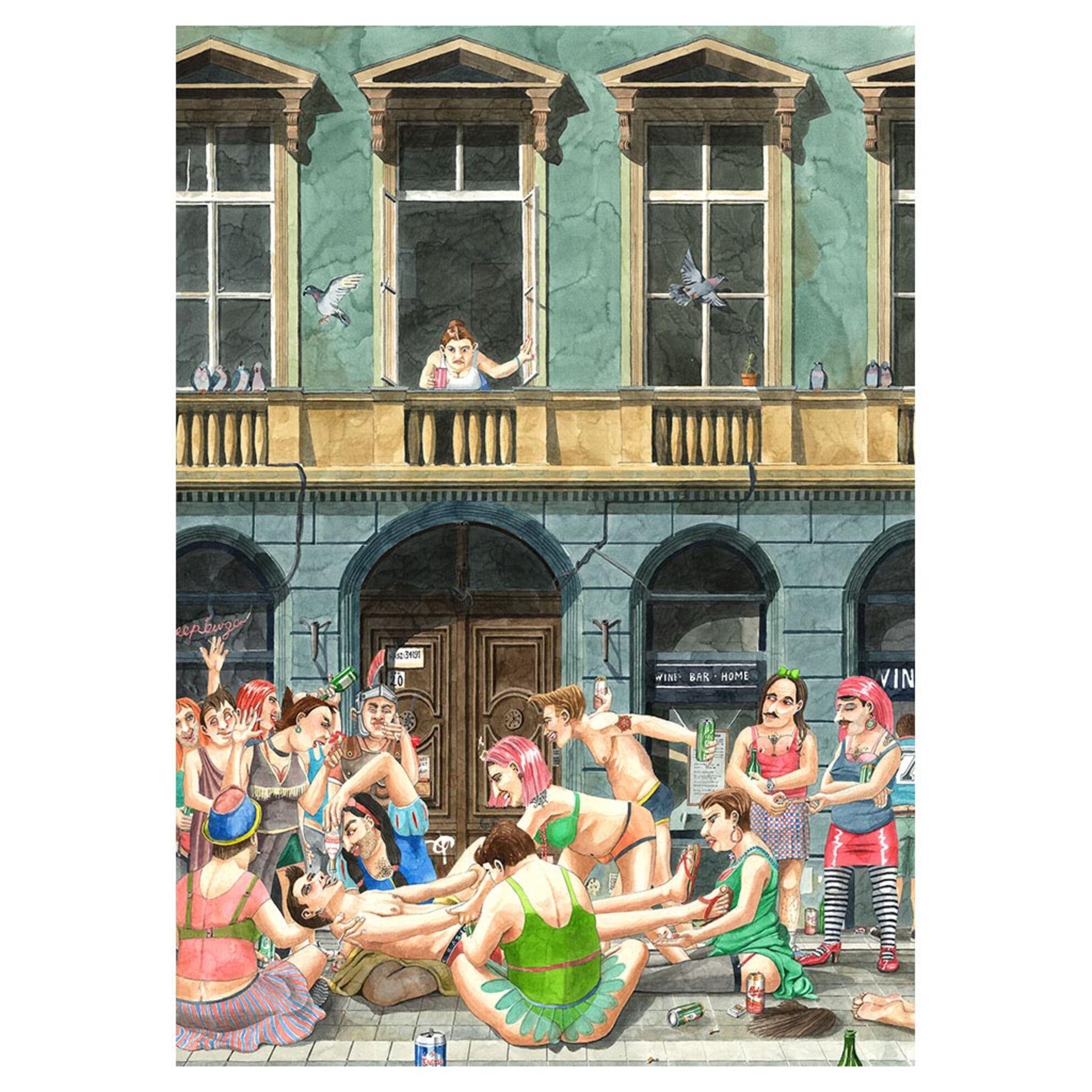
And when we point out his amazing talent… “Well, it’s all there, I don’t have to do so much, just recognise it, I guess. I don’t think I’m a very good painter. I’m not a classic painter as I draw everything first and then fill it with colours. I do the drawing itself in about a day, but then painting it takes a long time. I do it layer by layer and build it up so it has a bit of depth. It might take me about three weeks to finish. I’m more of a sculptor, I like working with metal, but haven't really been doing it recently.” A palm tree made entirely of old beer cans stands outside the flat.
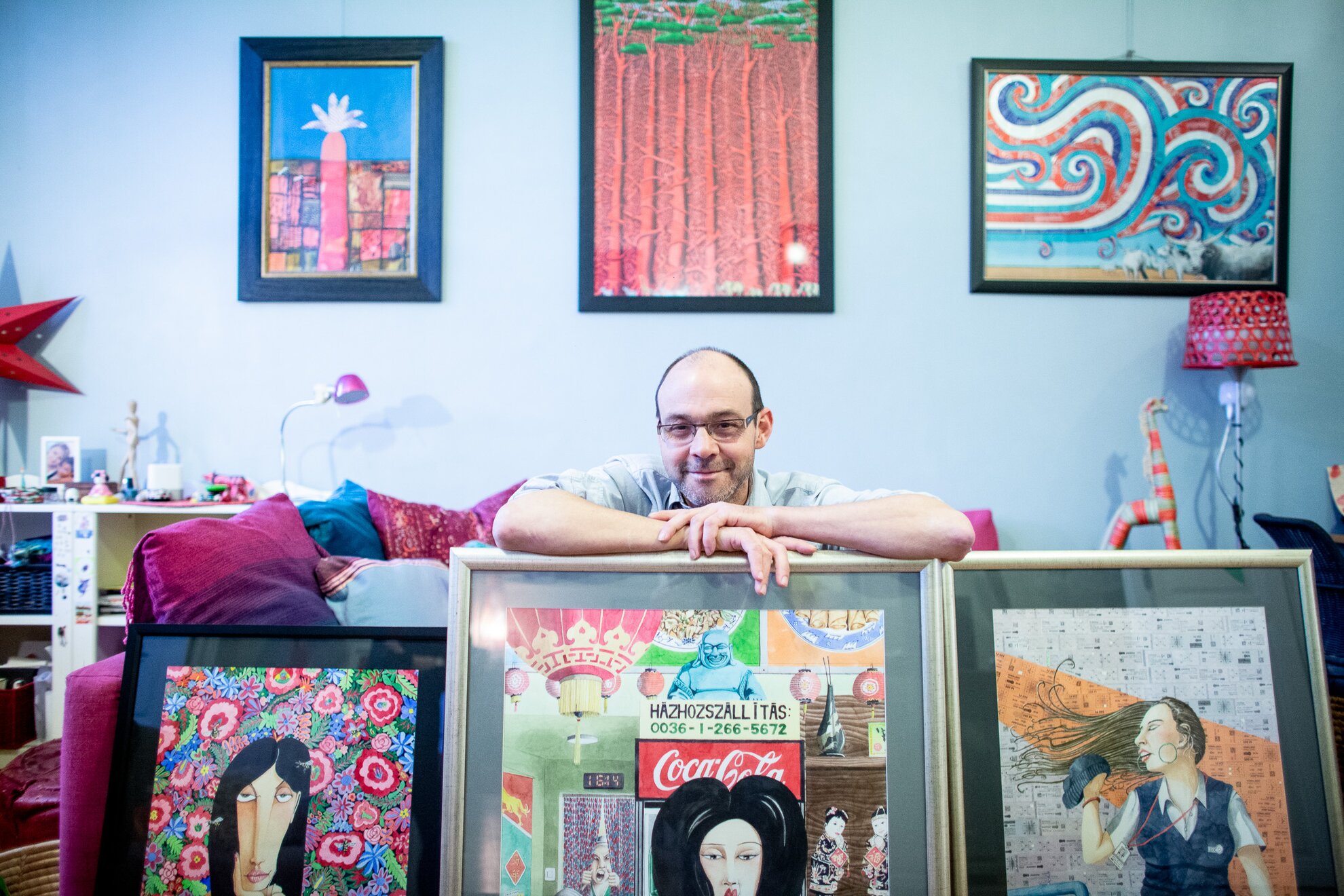
Pick up your own Marcus Goldson at downtown locations such as design fairs, cafés and shops, or online.
